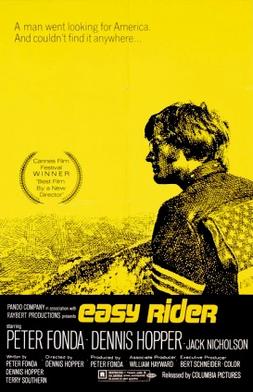The first literary mention of a car accident is in 1922 with F. Scott Fitzgerald's The Great Gatsby. That one’s easy to trace. The first novel with motorcycles as a focus was a bit harder to research. As it stands, The Rugged Road by Theresa Wallach goes back to 1935. The remarkable story of two women, the first in the world to drive the length of Africa, and the first to cross the Sahara on a motorcycle, London to Cape Town overland by motorcycle and sidecar, pulling a trailer! No roads, no compass, just a passion for living that women didn't exhibit in 1935.
It's easier to trace film about motorcycles; indeed all the way back to 1914 with the Charlie Chaplin vehicle, Mabel at the Wheel. The first real biker film, though, is Marlon Brando's The Wild One, based on a short story called "The Cyclists Raid," which popularized and exploited the Hollister Riot of 1947.
While mostly B-movies, motorcycle films became quite popular, with cult classics like Teenage Devil Dolls (my favorite), Scorpio Rising, a controversial short by Kenneth Anger, Russ Meyer’s Motor Psycho and the Faster Pussycat, Kill, Kill!, the greatest film title ever. These films would lead to the popular Wild Angels with Peter Fonda, Bruce Dern and Nancy Sinatra, which was the 16th most popular film of 1966. It was Fonda's inspiration for Easy Rider. The Billy Jack series began with Born Losers, release about the same time as the ultimate motorcycle film and the best picture of 1969, the aforementioned Easy Rider.
Easy Rider captures a time and spirit in America when the left was the voice of true liberation, individuality and freedom, while those on the right stood for thought control and conformity. How times have changed. Today, leftists are more about political correctness and repressive taxes and conservatives claim they want less intrusive government while striving for a police state with a wall. The home of the brave, the land of the free that the Fonda and Hopper hoped to find is ever harder to envision.
The storyline has a Quixotic quality to it that may not seem obvious to those who didn't live in the 60's and share the dream of a Utopian hippie society. In fact, if you didn't live in the era you might find the premise challenging since the values it celebrates are so thoroughly buried today.
Here's the deal: Wyatt (Captain America – Fonda) and Billy (Hopper) start out selling drugs to some rich dude to finance their freedom. Not necessarily the best way to budget a road trip, but indeed an anti-establishment approach to financial liberation. With the proceeds, they claim their freedom in the form of two beautiful custom choppers they ride throughout the movie. After Wyatt throws his watch in the dust and he and Billy hop on their rides - the two most recognized bikes in the world - their journey seeking true freedom begins.
When the two meet up with George Hanson (Jack Nicholson), they find a lost soul who longs to escape the confines of his environment by joining the hippies, but who ultimately cannot escape his oppressive culture. A bordello and drug sequence intricately explores the myth of the hippie movement; the idea that free sex and drugs are liberating to the human spirit. And while that may be subjective, our friends find that ultimately, they are not. Instead, they see the experience as confusing and hurtful and lead Wyatt to say that "they blew it." The film, of course, is ultimately a tragedy, just as the hippie movement itself was, as Joni Mitchell put it, “Just a dream some of us had.”
The folk and psychedelic soundtrack for the film could not be better, and the sequences of our protagonists cruising the open roads of northern Arizona and New Mexico to the sounds of Steppenwolf's "Born to Be Wild" and Hendrix's "If Six Were Nine" are among the most memorable on film.



No comments:
Post a Comment